Health risks numerous near nuclear plant Found it on Rense. Excerpts:
Some experts believe the Fukushima crisis is more serious than that resulting from an explosion at Ukraine's Chernobyl power plant 25 years ago, the Mainichi Daily News reported Monday.
"It's graver than Chernobyl in that no one can predict how the situation will develop," said Atsushi Kasai, a former senior researcher with the Japan Atomic Energy Research Institute.
Global Considerations/Implications
Japanese crisis prompts China's nuke law draft People's Daily Online. Excerpts:
The drafting of a nuclear energy law is high on the State Council's legislation agenda for this year as people raise questions about the safety of reactors following the nuclear crisis in Japan.
Work on the legislation is being seen as more "urgent" than it has been at any time since such a law was first proposed by the former premier Li Peng in 1984 as China started to plan its first civilian nuclear reactor, said an industry insider.
..
Similar attempts were dropped twice, in 1984 and 2008, mainly due to differences of opinion between administrative bodies and lawmakers.
"However, the central government noticed the urgency and necessity this time after four experts submitted a plea requiring the drafting of the law in the wake of the Japanese incident," Zheng said, referring to the leak of nuclear material from the Fukushima nuclear power plant following the earthquake off Japan on March 11.
Earthquake risk clouds Paducah's nuclear future And it goddamn well should! If we're not smart enough to NOT put a(nother!) nuclear plant in a historically catastrophic seismic zone, we really don't deserve to continue on, now do we?
Japan’s nuclear crisis far from over World Socialist Web Site. Excerpts:
The problems associated with units 1, 2 and 3 are more complex. Last week, robots sent into the reactor buildings recorded radiation levels of up to 57 millisieverts an hour in unit 1 and 49 millisieverts an hour in unit 3. Hidehiko Nishiyama, spokesman for the Nuclear and Industrial Safety Agency (NISA), told the press that these levels were too high to allow workers to enter. Japan has set an annual exposure limit at 250 millisieverts, raised from 100 at the beginning of the crisis.
Attempts by a robot to enter the building of unit 2, where radiations levels are believed to be higher, were hampered by steam which fogged its camera. The steam is being produced by water fed by emergency lines into the reactor’s hot core.
..
TEPCO’s optimistic estimate of six to nine months to stabilise the reactors is driven as much by political and commercial considerations, as technical ones. The energy giant as well as the nuclear regulator, NISA, and the Kan government all confront suspicion and hostility over their handling of the nuclear crisis. TEPCO is notorious for its long record of neglect and cover-up on safety issues.
At the press conference last week, former Fukushima Governor Eisako Sato, a supporter of nuclear power turned critic, explained that 21 problems at the Fukushima Dai-ichi plant had been reported to his office between 2002 and 2006. The whistle blowers came directly to the Fukushima prefecture rather than to NISA because of the nuclear agency’s close relations with TEPCO.
Sato was forced to step down in 2006 over bribery allegations, which he claimed were politically motivated. “Those who say nuclear power is dangerous, like myself, are treated as state enemies,” he told Tokyo’s Foreign Journalists Club. “This is a truly terrifying logic, is it not? Whoever it may be, be it a Diet member or governor, no one has been able to fight such logic so far.”
Japan: TEPCO floods containment vessels of 3 reactors at Fukushima No. 1 This probably won't end well, either. Excerpt:
In Japan, Tokyo Electric Power Co. workers have begun "the unprecedented and potentially risky measure" of flooding the containment vessels of three troubled Fukushima nuclear reactors with water. The Asahi Shimbun reports that this is the first known attempt ever in the world to saturate an entire containment vessel with water in order to cool the pressure vessels inside, and in turn, cool the reactor cores within.
With 12,000 Still Missing, Japan Keeps Searching From The Irrawaddy. Excerpts:
SHICHIGAHAMAMACHI, Japan — A line of somber soldiers walked methodically through a drained swamp Monday, with each step sinking their slender poles into the muck beneath.
If one hit a body, he would know.
"Bodies feel very distinctive," said Michihiro Ose, a spokesman for the Japanese army's 22nd infantry regiment.
The men were among 25,000 troops given the morbid duty of searching the rubble, the seas and the swamps of northeastern Japan for the bodies of the nearly 12,000 people still missing in last month's earthquake and tsunami.
Japan’s Terrifying Day Saw Unprecedented Blown Roof Expose Tepco Fuel Rods Bloomberg. Excerpts:
Makoto Nagai was sitting in his third-floor office at 2:46 p.m. on March 11 when the earthquake alarm buzzed. An orange LCD screen flashed 100 and 4, telling him the number of seconds before a category 4 quake would hit the city of Sendai on Japan’s northeast coast.
The intensity warning quickly jumped to 6, said Nagai, 55, head of the emergency response team in Sendai, located 129 kilometers (80 miles) west of the epicenter of what became the strongest quake in Japan’s recorded history.
..
Interviews with Tokyo Electric Power Co. engineers, technicians and contract workers who were at the company’s Fukushima Dai-Ichi plant on March 11 or handled the disaster response show how the facility stood up to the quake, only to fail when the tsunami that followed found a way through its engineering defenses.
..
The Fukushima Dai-Ichi station had 6,415 people on site that day. More than 5,500, like Matsumoto and Imamura, were subcontractors who reported to their clusters of offices in the plant for a head count.
As Tokyo Electric compiled the numbers, officials found that 6,413 staffers were safe and accounted for. Two Tokyo Electric employees were missing.
At this point, the crisis appeared contained. While roads inside the site had buckled and windows were shattered, the six reactor buildings, reinforced concrete and steel boxes as high as 56 meters, had withstood the earthquake.
..
..the quake knocked out a transformer station about 10 kilometers away, severing the utility’s connection to the electricity grid and the power needed to keep reactor cooling systems operating. It would be another hour before events conspired to make the name Fukushima synonymous with the biggest nuclear disaster since Chernobyl.
And:
As Yoshida’s Tepco engineers fanned out to control rooms to check for earthquake damage and monitor procedures as the reactors shut down, 25 kilometers up the coast in Minami Soma, Mayor Katsunobu Sakurai was realizing the earthquake was only part of the unfolding disaster.
Sakurai had raced to the fifth-floor rooftop of the government office, one of the highest in the city of 70,000 people. He looked toward the sea and saw what looked like a wall of sand pummeling and splintering through rows of houses and bellowing clouds of smoke and dust.
“In those first moments we couldn’t comprehend what we were seeing,” Sakurai, 55, said. The tsunami he was witnessing surged 2.4 kilometers inland, swallowing everyone in its path. Almost 1,500 town residents were killed or are listed as missing, out of a national toll exceeding 26,000.
That's the set-up. The whole cascading failures are detailed at the link.
Some experts believe the Fukushima crisis is more serious than that resulting from an explosion at Ukraine's Chernobyl power plant 25 years ago, the Mainichi Daily News reported Monday.
"It's graver than Chernobyl in that no one can predict how the situation will develop," said Atsushi Kasai, a former senior researcher with the Japan Atomic Energy Research Institute.
Global Considerations/Implications
Japanese crisis prompts China's nuke law draft People's Daily Online. Excerpts:
The drafting of a nuclear energy law is high on the State Council's legislation agenda for this year as people raise questions about the safety of reactors following the nuclear crisis in Japan.
Work on the legislation is being seen as more "urgent" than it has been at any time since such a law was first proposed by the former premier Li Peng in 1984 as China started to plan its first civilian nuclear reactor, said an industry insider.
..
Similar attempts were dropped twice, in 1984 and 2008, mainly due to differences of opinion between administrative bodies and lawmakers.
"However, the central government noticed the urgency and necessity this time after four experts submitted a plea requiring the drafting of the law in the wake of the Japanese incident," Zheng said, referring to the leak of nuclear material from the Fukushima nuclear power plant following the earthquake off Japan on March 11.
Earthquake risk clouds Paducah's nuclear future And it goddamn well should! If we're not smart enough to NOT put a(nother!) nuclear plant in a historically catastrophic seismic zone, we really don't deserve to continue on, now do we?
Japan’s nuclear crisis far from over World Socialist Web Site. Excerpts:
The problems associated with units 1, 2 and 3 are more complex. Last week, robots sent into the reactor buildings recorded radiation levels of up to 57 millisieverts an hour in unit 1 and 49 millisieverts an hour in unit 3. Hidehiko Nishiyama, spokesman for the Nuclear and Industrial Safety Agency (NISA), told the press that these levels were too high to allow workers to enter. Japan has set an annual exposure limit at 250 millisieverts, raised from 100 at the beginning of the crisis.
Attempts by a robot to enter the building of unit 2, where radiations levels are believed to be higher, were hampered by steam which fogged its camera. The steam is being produced by water fed by emergency lines into the reactor’s hot core.
..
TEPCO’s optimistic estimate of six to nine months to stabilise the reactors is driven as much by political and commercial considerations, as technical ones. The energy giant as well as the nuclear regulator, NISA, and the Kan government all confront suspicion and hostility over their handling of the nuclear crisis. TEPCO is notorious for its long record of neglect and cover-up on safety issues.
At the press conference last week, former Fukushima Governor Eisako Sato, a supporter of nuclear power turned critic, explained that 21 problems at the Fukushima Dai-ichi plant had been reported to his office between 2002 and 2006. The whistle blowers came directly to the Fukushima prefecture rather than to NISA because of the nuclear agency’s close relations with TEPCO.
Sato was forced to step down in 2006 over bribery allegations, which he claimed were politically motivated. “Those who say nuclear power is dangerous, like myself, are treated as state enemies,” he told Tokyo’s Foreign Journalists Club. “This is a truly terrifying logic, is it not? Whoever it may be, be it a Diet member or governor, no one has been able to fight such logic so far.”
Japan: TEPCO floods containment vessels of 3 reactors at Fukushima No. 1 This probably won't end well, either. Excerpt:
In Japan, Tokyo Electric Power Co. workers have begun "the unprecedented and potentially risky measure" of flooding the containment vessels of three troubled Fukushima nuclear reactors with water. The Asahi Shimbun reports that this is the first known attempt ever in the world to saturate an entire containment vessel with water in order to cool the pressure vessels inside, and in turn, cool the reactor cores within.
With 12,000 Still Missing, Japan Keeps Searching From The Irrawaddy. Excerpts:
SHICHIGAHAMAMACHI, Japan — A line of somber soldiers walked methodically through a drained swamp Monday, with each step sinking their slender poles into the muck beneath.
If one hit a body, he would know.
"Bodies feel very distinctive," said Michihiro Ose, a spokesman for the Japanese army's 22nd infantry regiment.
The men were among 25,000 troops given the morbid duty of searching the rubble, the seas and the swamps of northeastern Japan for the bodies of the nearly 12,000 people still missing in last month's earthquake and tsunami.
Japan’s Terrifying Day Saw Unprecedented Blown Roof Expose Tepco Fuel Rods Bloomberg. Excerpts:
Makoto Nagai was sitting in his third-floor office at 2:46 p.m. on March 11 when the earthquake alarm buzzed. An orange LCD screen flashed 100 and 4, telling him the number of seconds before a category 4 quake would hit the city of Sendai on Japan’s northeast coast.
The intensity warning quickly jumped to 6, said Nagai, 55, head of the emergency response team in Sendai, located 129 kilometers (80 miles) west of the epicenter of what became the strongest quake in Japan’s recorded history.
..
Interviews with Tokyo Electric Power Co. engineers, technicians and contract workers who were at the company’s Fukushima Dai-Ichi plant on March 11 or handled the disaster response show how the facility stood up to the quake, only to fail when the tsunami that followed found a way through its engineering defenses.
..
The Fukushima Dai-Ichi station had 6,415 people on site that day. More than 5,500, like Matsumoto and Imamura, were subcontractors who reported to their clusters of offices in the plant for a head count.
As Tokyo Electric compiled the numbers, officials found that 6,413 staffers were safe and accounted for. Two Tokyo Electric employees were missing.
At this point, the crisis appeared contained. While roads inside the site had buckled and windows were shattered, the six reactor buildings, reinforced concrete and steel boxes as high as 56 meters, had withstood the earthquake.
..
..the quake knocked out a transformer station about 10 kilometers away, severing the utility’s connection to the electricity grid and the power needed to keep reactor cooling systems operating. It would be another hour before events conspired to make the name Fukushima synonymous with the biggest nuclear disaster since Chernobyl.
And:
As Yoshida’s Tepco engineers fanned out to control rooms to check for earthquake damage and monitor procedures as the reactors shut down, 25 kilometers up the coast in Minami Soma, Mayor Katsunobu Sakurai was realizing the earthquake was only part of the unfolding disaster.
Sakurai had raced to the fifth-floor rooftop of the government office, one of the highest in the city of 70,000 people. He looked toward the sea and saw what looked like a wall of sand pummeling and splintering through rows of houses and bellowing clouds of smoke and dust.
“In those first moments we couldn’t comprehend what we were seeing,” Sakurai, 55, said. The tsunami he was witnessing surged 2.4 kilometers inland, swallowing everyone in its path. Almost 1,500 town residents were killed or are listed as missing, out of a national toll exceeding 26,000.
That's the set-up. The whole cascading failures are detailed at the link.










































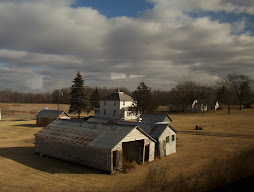


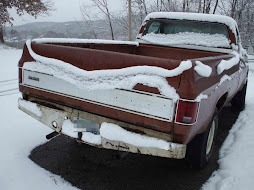

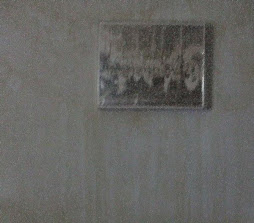






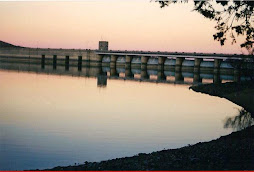






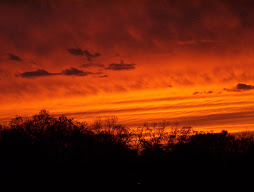
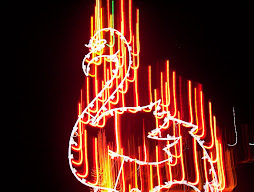




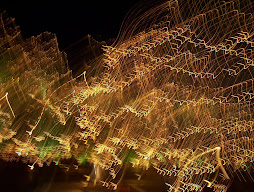


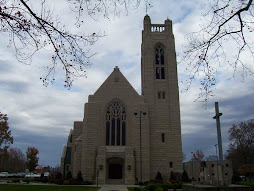
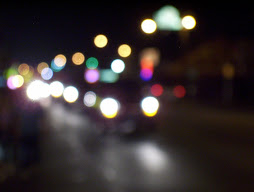









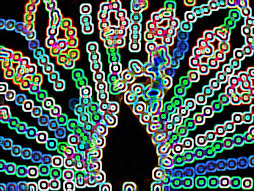









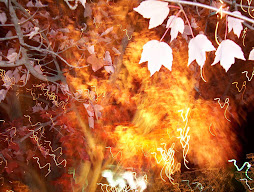

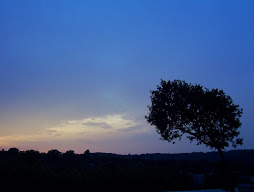











No comments:
Post a Comment